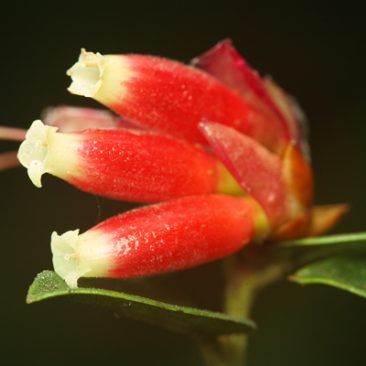Blueberry Relatives of the New World Tropics (Ericaceae)
by James Luteyn & Paola Pedraza-Peñalosa
The plant family Ericaceae (126 genera and ca. 4100 species) is better known by its economically important temperate species that include crop and ornamentals plants such as the blueberry, cranberry, Rhododendron, azalea, heath, and heather. However, Ericaceae have a much wider natural distribution and are also present in the mountains of tropical regions. In the tropics, the diversity and ecological importance of Ericaceae are significant, accounting for thousands of species and standing out as a dominant group in certain vegetation types.
This website is dedicated to the study of members of the Ericaceae that occur in the tropical Americas, more specifically within the Tropic of Cancer and Tropic of Capricorn (23°30’N-23°30’S). In the New World tropics (Neotropics) Ericaceae (66 genera and > 800 species) are a prominent component of the flora of the top priority area for conservation in the world, the tropical Andes. The tropical Andes (northern and central South America) have the greatest number of species and endemics (species exclusive to a region) of the world, and conservation there is of paramount importance since the region also has the highest levels of threat (deforestation, land transformation, etc.) (Mast et al., 1999).
In the Neotropics and especially in the northern Andes, Ericaceae species have very restricted geographic distributions and many genera are not found outside of the region (endemics), thus entire lineages are vulnerable to diminishing habitat and environment quality– 70% of the genera and 94% of the species are endemic to the Neotropics. Conservation of neotropical Ericaceae is important, because not only are they the close relatives of economically important species, but also because many neotropical species are edible or used by the local communities as well. Like their North American counterparts, recent studies have shown neotropical blueberries are also rich in antioxidants. Moreover, Ericaceae are a key component of montane ecosystems, particularly the berry-producing tribe Vaccinieae (inferior-ovary genera) that includes the closer relatives of the blueberries, as they provide food to numerous animals from insects and birds to mammals. In general, neotropical blueberries (Vaccinieae) are better represented in montane humid and cool ecosystems such as the cloud forest between1000 to 3500 meters elevation.
This website, “Blueberries and Relatives (Ericaceae) of the New World Tropics,” seeks to bring together as much information as possible about the systematics of neotropical Ericaceae. Although the majority of neotropical Ericaceae have not been formally treated in taxonomic revisions, information has either been generated specifically for this site or extracted from published floristic and regional treatments or descriptions of new species; thus, the species lists, synonymies, and nomenclature of groups that have not been revised yet may have inconsistencies.
In this website we provide keys and descriptions for all the genera as currently accepted. The majority of neotropical genera are native to the Neotropics and only a few are also found in temperate and subtropical regions; for those with widespread distribution, the descriptions here presented are meant to represent only the variation within the Neotropics. At the species level, over 550 species are here described and illustrated; for georeferenced collections maps can be generated. Links are also provided for herbarium specimens deposited at The New York Botanical Garden’s William and Lynda Steere Herbarium (NY). Additional information includes synonymy, cultivated species, common names and uses, and notes on natural history. Sometimes the additional information includes a concept of “rare and endangered”, meaning that the species is very local in its known distribution (i.e., few localities), has been collected fewer than 10 times overall, and that its habitat is or has been undergoing severe transformation (i.e., destruction). This conservation status is an informal one and is revised as necessary and as more information becomes available.


